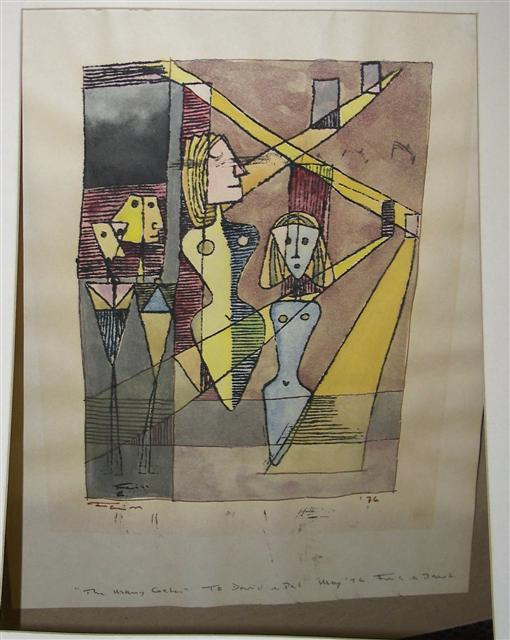FRITZ FAISS (1905-1981)
Fritz Faiss (1905–1981), German artist, philosopher, author, and poet, was born one of fourteen children in Furtwangen, in the Black Forest of Germany on March 6, 1905. His mother gave him the gift of music and storytelling; his father, the gift of scientific and mechanical thinking. As a young boy he preferred to travel through Germany and Europe alone, on foot or on bicycle, with nothing but his sketchbook and passport. He made contact with leading artists of his time, including Adolf Hoelzel, and was not only a teacher, but a medical doctor as well. Faiss was accepted at the Bauhaus and studied under Paul Klee and Wassily Kandinsky.
By 1937, Faiss was named a “degenerate” artist by the Nazi regime as the rise of Hitlerism grew in force. Although he was forbidden to paint, exhibit, or send his work outside of Germany, he continued to paint secretively at great risk; he risked his life to save his work just as he risked his life to save the lives of many of his friends. Although the Nazis destroyed Faiss’s studio twice, he saved some of his woodcuts from Gestapo searches by hiding them in woodpiles or disguising them by pasting paintings over them and hanging them in his studio. He was forced to give up his medical practice and was taken to a forced labor camp, where he suffered under medical experiments. Faiss was one of three who survived the camp and was released by American intervention.
He spent years recovering from the labor camp and his first exhibition after the war was fittingly sponsored by the American Military Government, in Pforzheim, in 1947. His work has been exhibited in most capitals in Europe as well as the east and west coasts of the United States.
In 1951, Faiss left behind a professorship at Frankfurt-am-Main and came to California. He accepted a position at the University of California at Los Angeles. He left after being criticized for encouraging individualism in the arts, and accepted a position at California State University, Northridge. He retired in 1973 as a professor Emeritus. Faiss suffered a stroke in 1976, which greatly influenced his later work. He took another challenge in stride as he used his left hand to paint.
Others call his work expressionist, but Fritz Faiss’s work stands alone; he calls his work “Faissism.” He shifts easily from the naturalistic to the abstract. He was an artist during the years after the first World War, an exciting and unique time; a period of remarkable spiritual uplift and great idealism. Musicians tend to enjoy the harmonistic themes in his work. Other themes include the life of Christ, war, the Hawaiian coast, and Big Sur.
Faiss liked to use pen and ink, silverpoint, woodcut, and monoprint- but is perhaps best known for his mastery of encaustic (wax) painting. He has written several books and is famous for his color theories. The images in many of his paintings reflect his ability to start life anew after the war and reflect Faiss’s inner balance and peace. (Biography from Trout Museum Website)
 6″ x 8″
6″ x 8″
“The Many Gates”
(To David & Pat May ’76 Fritz & Janet)
not numbered
Fritz Faiss
$700